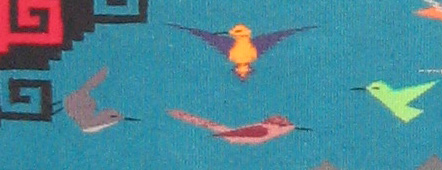Rug of the Day: Mae Clark and Her Weaving Life Story
Tempe, AZ Sometimes I see a weaving that just stays with me. The rug above, by Mae Clark of the New Lands area, near Sanders, Arizona has been an inspiration to me ever since I first saw it in 2005. Mae is a true artist, carefully composing her work, always pushing her design skills and trusting that the work will find a market. She does the kind of weaving that most people don’t think of as a Navajo rug and that is a risky proposition. It doesn’t hurt that one of the most ardent admirers of her work is trader Bruce Burnham, to the extent that I’ve never known Mae to sell her work to anyone else. She works with Germantown reproduction yarns, a brightly colored three-ply worsted and Burnham’s Trading Post Yarn, which is a tightly spun woolen process yarn that resembles Navajo hand-spun. If she can’t get the color she wants from Burnham’s, Mae dyes it herself.
Mae told Bruce that this rug is a window that represents all of the stages her weaving career, culminating with pictorial elements. The bird and butterfly panel is at the top of the vignettes into the other weaving patterns that brought Mae to this point in her life. There are about 60 birds and butterflies on this rug and they are in every stage of flight and repose that you can imagine. The more you look at them, the more you’ll see. I’ve tried to pull out some of the most interesting areas, but the five megapixel camera that I was using limits the enlargements that I can pull out of the pictures. I was kind of afraid that Bruce would start charging me $1 a picture! I hope you’ll enjoy getting better acquainted with Mae and her bevy of birds and butterflies. Although Mae usually does several versions of a design, to my knowledge this is the only one of its kind. She’s done rugs with other birds and even people, but she hasn’t woven another life story. So far.
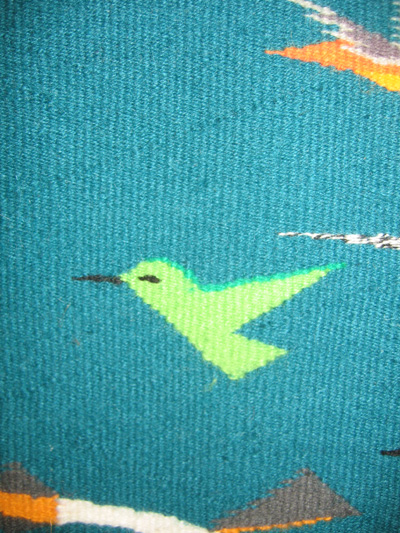 |
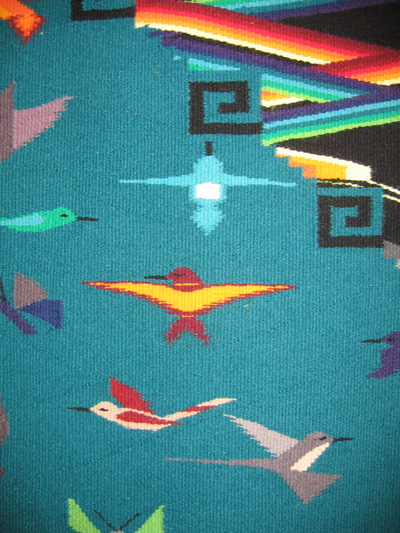 |
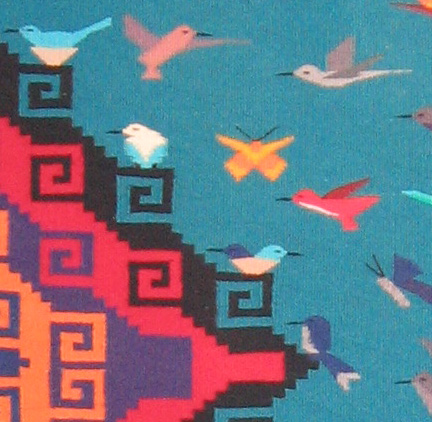 |
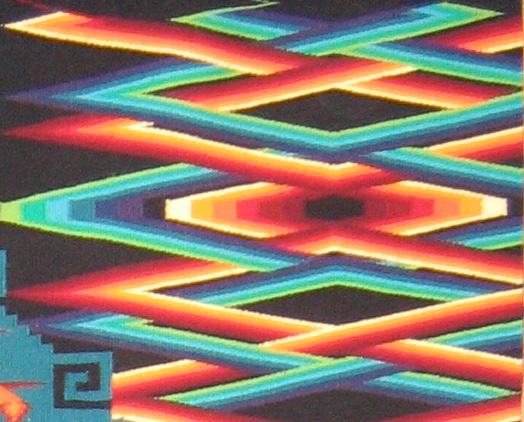 |
|
|
|
Hagoshíí (so long for now)
Mary Walker

